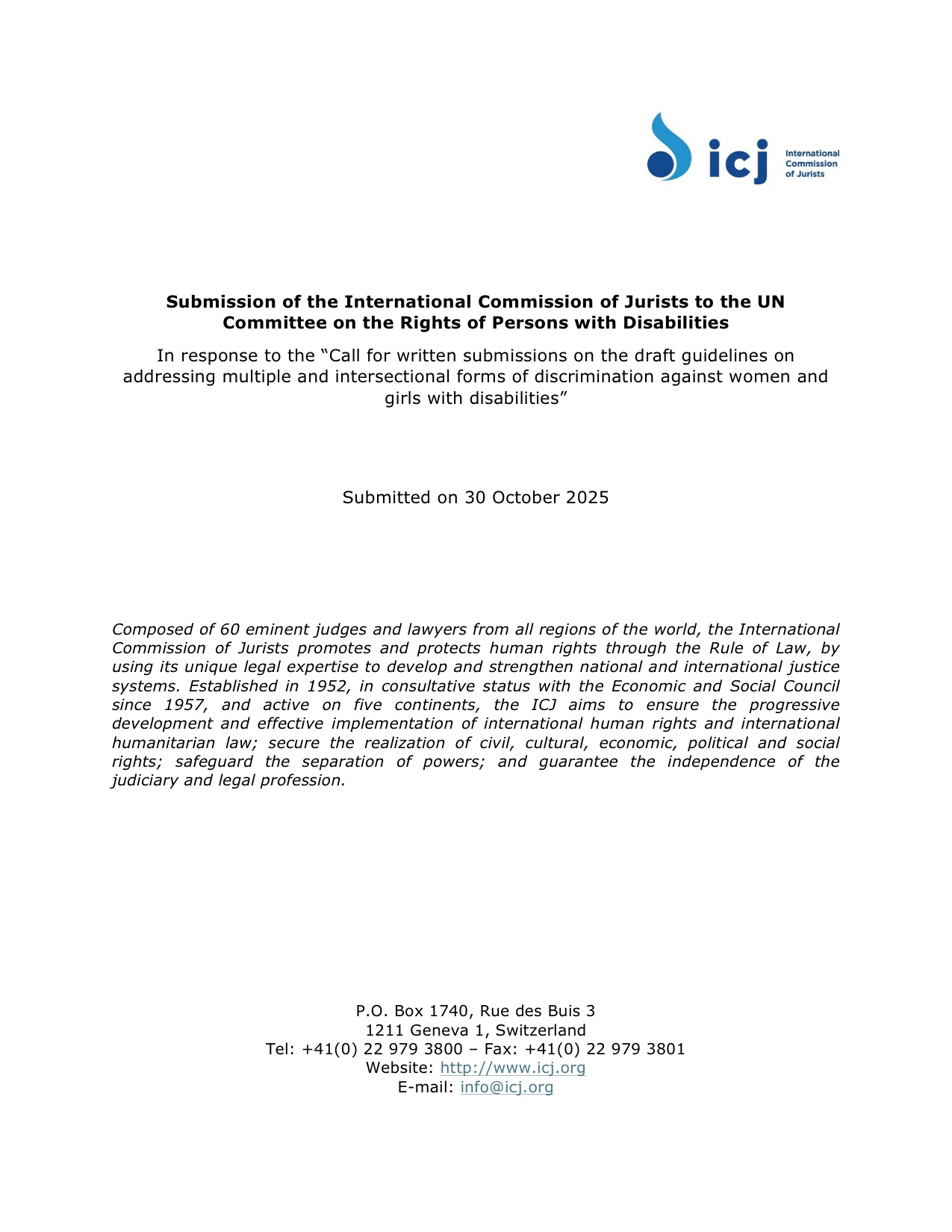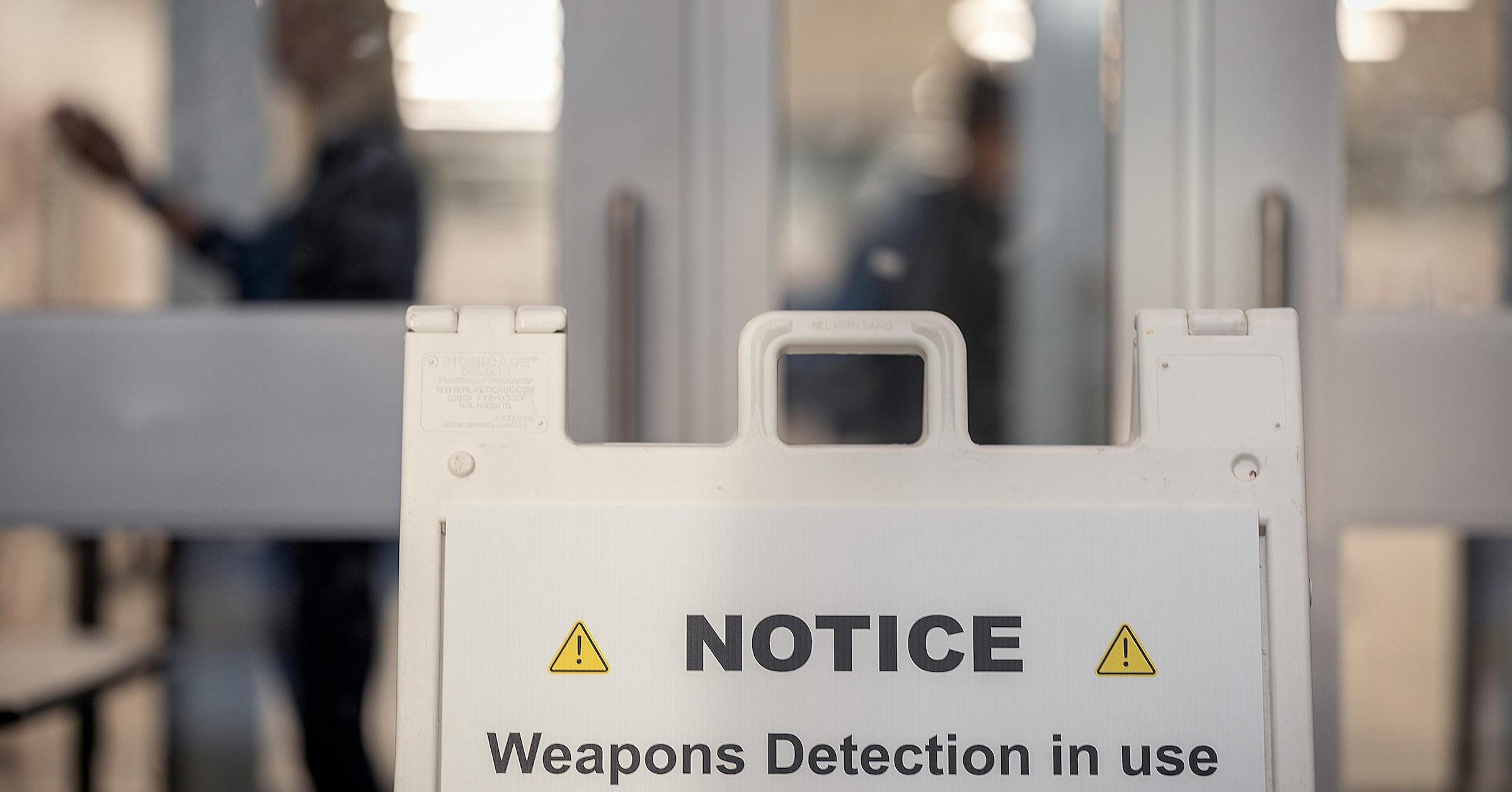Border bill would create ‘in limbo’ foreign residents, refugee groups say – The Globe and Mail

Report on the Sustainable Development Goal Implications of Canada’s Proposed Bill C-2
Executive Summary
A proposed federal legislative amendment, Bill C-2, also known as the Strong Borders Act, is poised to significantly alter Canada’s immigration and asylum framework. Advocacy groups report that the bill would create a new class of residents living in a state of “permanent limbo.” These individuals, originating from countries to which Canada has suspended deportations due to conflict, would be barred from the standard asylum process and denied access to work permits and health coverage. This report analyzes the bill’s provisions and concludes that they present a direct challenge to Canada’s commitment to several key United Nations Sustainable Development Goals (SDGs), including those addressing poverty, health, inequality, decent work, and justice.
Key Provisions of Bill C-2
- One-Year Asylum Bar: The legislation would prohibit individuals who arrived in Canada more than one year ago from having an asylum claim heard by the Immigration and Refugee Board (IRB), irrespective of subsequent departures and returns. This applies to entries after June 24, 2020.
- Restriction on U.S. Border Crossers: It would prevent individuals who crossed the U.S. border irregularly from claiming asylum if they have been in Canada for 14 days or more, tightening a provision of the Safe Third Country Agreement.
- Shift to Pre-Removal Risk Assessments (PRRA): Most individuals deemed ineligible for an IRB hearing would be directed toward deportation, with a PRRA as a potential final recourse. This process is conducted by an Immigration, Refugees and Citizenship Canada (IRCC) official, typically without an in-person hearing, and has a significantly lower acceptance rate than IRB hearings.
Analysis of Impacts on Sustainable Development Goals (SDGs)
- SDG 10: Reduced Inequalities: The bill risks creating a two-tiered system for asylum seekers, institutionalizing inequality. It would establish a marginalized class of residents who are unable to be removed but are denied a pathway to status, social services, and economic participation. This disproportionately affects nationals from conflict zones, deepening inequalities within Canadian society.
- SDG 16: Peace, Justice and Strong Institutions: By restricting access to the independent, quasi-judicial IRB and funnelling applicants to a less robust administrative review (PRRA), the bill undermines the principle of access to justice for vulnerable populations. Concerns have also been raised by the Justice Department that the act could clash with Charter rights, further challenging the strength and fairness of Canada’s legal institutions.
- SDG 8: Decent Work and Economic Growth: Denying work permits to individuals awaiting a PRRA or living in “limbo” directly contravenes the goal of promoting decent work for all. It prevents these individuals from contributing to the Canadian economy, achieving self-sufficiency, and participating in society with dignity, forcing them into precarious and unregulated labour markets.
- SDG 1: No Poverty: By eliminating the legal right to work, the legislation effectively condemns a segment of the population to a state of destitution. Without the ability to earn an income, these individuals and their families are placed at extreme risk of poverty, unable to afford basic necessities.
- SDG 3: Good Health and Well-being: The bill would strip applicants in the PRRA stream of eligibility for federal health coverage. This lack of access to essential medical services poses a severe threat to the physical and mental well-being of a population that has often experienced significant trauma.
Stakeholder Concerns and Government Response
- Advocacy Group Concerns: The Canadian Council for Refugees and the Migrant Workers Alliance for Change have warned that the bill will leave thousands in a state of legal precarity. They highlight that the PRRA is a much more difficult path to protection and that the one-year bar is overly stringent, potentially disqualifying legitimate refugees who had previously visited Canada for work or study.
- Government Position: IRCC acknowledges that some individuals cannot be removed due to moratoriums on deportations to certain countries. The department states that these individuals may remain in Canada until conditions in their home country improve and will have access to a PRRA before any removal takes place. IRCC justifies the one-year rule as a measure to manage IRB backlogs and improve processing efficiency.
Conclusion
While Bill C-2 is framed as a measure to strengthen border management, its provisions are in significant conflict with the foundational principles of the Sustainable Development Goals. By creating a legally unsupported and economically marginalized population, the legislation undermines efforts to reduce inequality (SDG 10), ensure access to justice (SDG 16), promote decent work (SDG 8), eradicate poverty (SDG 1), and secure good health and well-being (SDG 3). The proposed changes risk damaging Canada’s reputation as a global leader in refugee protection and contravene the core SDG pledge to “leave no one behind.”
1. Which SDGs are addressed or connected to the issues highlighted in the article?
The article discusses Canada’s proposed “Strong Borders Act” (Bill C-2) and its potential impact on asylum seekers and refugees. The issues raised connect to several Sustainable Development Goals (SDGs) that focus on human rights, justice, equality, and well-being.
-
SDG 10: Reduced Inequalities
This goal is central to the article, which focuses on the rights and treatment of migrants and refugees. The proposed legislation creates different classes of asylum seekers with unequal access to legal processes and social support, directly relating to the goal of reducing inequalities within and among countries.
-
SDG 16: Peace, Justice and Strong Institutions
The article’s core theme is access to justice. It details how Bill C-2 would alter Canada’s asylum system, potentially barring individuals from fair hearings before the Immigration and Refugee Board (IRB) and creating a less transparent process. This directly engages with the goal of promoting just, peaceful, and inclusive societies.
-
SDG 8: Decent Work and Economic Growth
The bill’s consequences for asylum seekers’ ability to work are explicitly mentioned. By denying access to work permits, the legislation would prevent individuals from participating in the economy and securing their livelihoods, which is a key concern of SDG 8.
-
SDG 3: Good Health and Well-being
The article notes that access to health coverage is tied to the asylum process. The proposed changes would leave a group of people without access to federal health care, impacting their well-being and connecting the issue to SDG 3.
-
SDG 1: No Poverty
By creating a class of residents who are unable to work legally and lack access to social support systems like healthcare, the legislation could push vulnerable individuals and families into poverty, undermining the objective of SDG 1.
2. What specific targets under those SDGs can be identified based on the article’s content?
Based on the issues discussed, several specific SDG targets can be identified:
-
SDG 10: Reduced Inequalities
- Target 10.7: “Facilitate orderly, safe, regular and responsible migration and mobility of people, including through the implementation of planned and well-managed migration policies.” The article directly critiques Bill C-2 as a migration policy that could lead to disorder by creating a “permanent limbo” for a class of residents. Refugee groups warn that the policy is not “well-managed” as it fails to account for those who cannot be deported but are also barred from the asylum system.
-
SDG 16: Peace, Justice and Strong Institutions
- Target 16.3: “Promote the rule of law at the national and international levels and ensure equal access to justice for all.” The article highlights a potential violation of this target. The bill would bar people who arrived more than a year ago from an IRB hearing, creating unequal access to justice. The distinction between a full IRB hearing (with a ~60% acceptance rate) and a Pre-Removal Risk Assessment (PRRA) based on paperwork with a “much more difficult path to resettlement” exemplifies this inequality.
- Target 16.9: “By 2030, provide legal identity for all, including birth registration.” While not about birth registration, the creation of an “‘in limbo’ class of foreign residents” who are “living without status” directly relates to the principle of legal identity. Without status, individuals are unable to formally participate in society.
-
SDG 8: Decent Work and Economic Growth
- Target 8.8: “Protect labour rights and promote safe and secure working environments for all workers, including migrant workers… and those in precarious employment.” The article states that those barred from the IRB process would not be eligible for work permits. This denies them labour rights and the ability to “participate in dignity,” pushing them into a state of precariousness where they cannot legally work.
-
SDG 3: Good Health and Well-being
- Target 3.8: “Achieve universal health coverage, including financial risk protection, access to quality essential health-care services…” The article explicitly mentions that “Applicants to the IRB can qualify for work permits and health coverage,” whereas those under the new proposed system, such as those awaiting a PRRA, “would not be eligible for… federal health care coverage.” This directly undermines the principle of universal health coverage for all people residing in the country.
3. Are there any indicators mentioned or implied in the article that can be used to measure progress towards the identified targets?
The article provides several direct and implied metrics that can serve as indicators to measure the impact of the proposed legislation in relation to the SDG targets.
-
For SDG Target 10.7 (Orderly Migration):
- Implied Indicator: The number of people living “without status” or in “permanent limbo” as a result of the bill. The article’s central concern is the creation of this new class of residents.
- Implied Indicator: The number of asylum claims deemed ineligible for an IRB hearing due to the one-year or 14-day rules introduced by Bill C-2.
-
For SDG Target 16.3 (Access to Justice):
- Direct Indicator: The acceptance rate of asylum claims at IRB hearings (stated as “around 60 per cent”) versus the acceptance rate of PRRAs (implied to be significantly lower). A widening gap would indicate decreasing access to justice.
- Implied Indicator: The proportion of asylum seekers who are assessed via paperwork (PRRA) versus an in-person hearing (IRB).
-
For SDG Target 8.8 (Labour Rights):
- Direct Indicator: The number or proportion of asylum seekers in Canada who are ineligible for a work permit while their claim is being processed. The article clearly states that those undergoing PRRAs “would not be eligible for work permits.”
-
For SDG Target 3.8 (Universal Health Coverage):
- Direct Indicator: The number or proportion of asylum seekers in Canada who are ineligible for federal health care coverage. The article draws a clear line between IRB applicants who can qualify and others who cannot.
4. Table of SDGs, Targets, and Indicators
| SDGs | Targets | Indicators (Mentioned or Implied in the Article) |
|---|---|---|
| SDG 10: Reduced Inequalities | 10.7: Facilitate orderly, safe, regular and responsible migration and mobility of people, including through the implementation of planned and well-managed migration policies. |
|
| SDG 16: Peace, Justice and Strong Institutions |
16.3: Promote the rule of law at the national and international levels and ensure equal access to justice for all.
16.9: By 2030, provide legal identity for all. |
|
| SDG 8: Decent Work and Economic Growth | 8.8: Protect labour rights and promote safe and secure working environments for all workers, including migrant workers. |
|
| SDG 3: Good Health and Well-being | 3.8: Achieve universal health coverage, including access to quality essential health-care services. |
|
Source: theglobeandmail.com

What is Your Reaction?
 Like
0
Like
0
 Dislike
0
Dislike
0
 Love
0
Love
0
 Funny
0
Funny
0
 Angry
0
Angry
0
 Sad
0
Sad
0
 Wow
0
Wow
0


















-1920w.png?#)






















;Resize=805#)



































